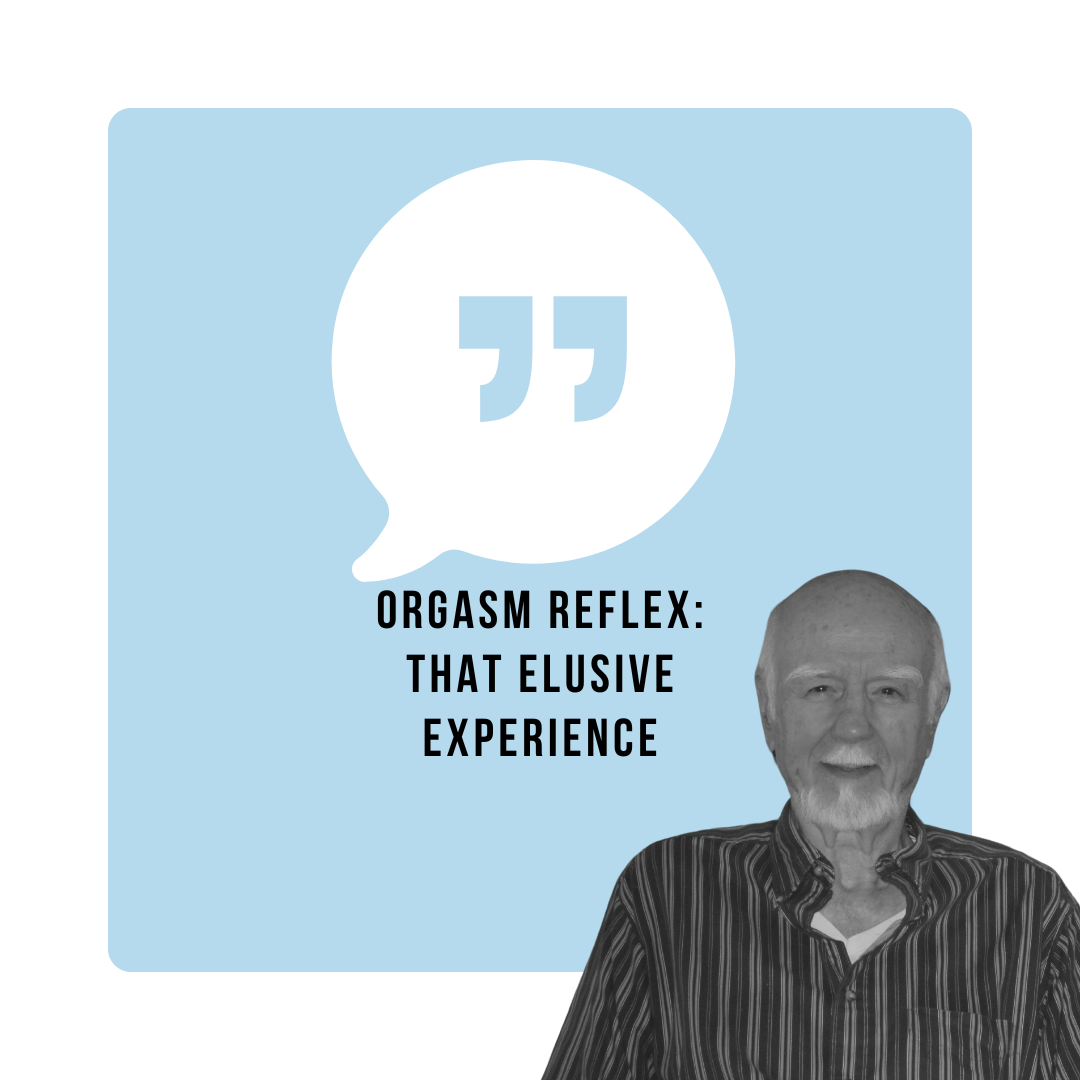Orgasm Reflex: That Elusive Experience
Author: Ed Svasta | Published in: IIBA Clinical Journal - Issue: 1993 - Vol 5 - Num 2 - Date of publication: 1993
Click here to read the article in PDF format ...
In my twenty-two years as a bioenergetics student, patient, therapist and trainer, the orgasm reflex has been elusive to me and I expect it has been the same to many of you.
As a student from 1970 to 1974, I was taught that the orgasm reflex was the main goal in therapy and that reaching it indicated health and relative freedom from neurosis. This was the concept of Wilhelm Reich. According to Alexander Lowen, who was a patient of Reich, the reflex was readily experienced under the therapeutic influence of Reich. But Lowen realized that the reflex didn’t necessarily transfer to orgastic potency or hold up in real life. He, therefore, made the goal of therapy a more general one - that of increasing the patient’s capacity to experience pleasure by reducing chronic tensions, working out character issues and integrating ego and body. As students, occasionally we did breathing exercises in order to feel our blocks and to approach the reflex. But I never experienced it or saw it occur.
I was in bioenergetic therapy from 1970 to 1980; first with a woman, then concurrently with her and a man, and later with the same man and another woman. I'd like to say, parenthetically, that it’s good to have both a male and female therapist, if you can afford it. Later 1 thought it would be more efficient to have had both present at the same time to facilitate working out oedipal issues. And later than that, I tried practicing that way myself. It only lasted about ten months before we, as therapists, had to separate. It’s not so easy.
As a patient I was rigidly “held.” I also had some earlier per issues. My therapy, as I recall, emphasized insights based on bioenergetic concepts, the voicing of negative transference feelings, grounding, charging up and reducing chronic tensions with emotional release and change of mind and attitudes. There was little work directly on the orgasm reflex. Nevertheless, I changed slowly and grew in freedom, flexibility and good feeling. But I always wondered about that elusive reflex.
In 1976, I became a trainer in New York. A year later I went to Holland to start the first training program there. I carried with me Reich’s concepts about orgastic potency and orgasm reflex, Lowen’s modifications, and my own lack of direct experience with the topic. I wondered if I could adequately teach it since I hadn’t experienced it. Four years of training went by and there was no problem in that regard, since it came up only conceptually and the students did not ask for more. I continued to work toward it and teach about it, as well as present the rest of the bioenergetic curriculum. I gave students many learning experiences, but not that one.
Several years later in the second Dutch training group, while I was working bioenergetically with a young man on a mattress, his breathing became stronger and the flow extended deeply throughout his body. As his pelvic movements harmonized with his breathing, both became easier and more urgent. A clear picture of a preorgastic experience emerged. I thought, “This is it.” A short time later, with an automatic switch to spontaneous breathing, he burst into the orgasm reflex, convulsing readily and then quieting and relaxing. He looked content. And I felt happy. The group which had been watching became utterly silent. After a while, I opened up a discussion about what had happened: “You and I have seen the orgasm reflex for the first time!” We discussed many features of the experience but two significant ones emerged. Even though the experience we had witnessed had been a decidedly energetic one, there was only a small amount of sexual arousal. And I felt that the old bioenergetic rule of thumb, that you can never take a patient to an experience that you have not had, was still a good one, even though not applicable this time. Since I had kept my eyes and ears open and my wits about me as I worked with this man, I had not interfered with his natural process.
A similar event happened a few years later to a woman in a German training program. The group watching again responded with profound silence except for the woman’s husband, who was also a student. He sweetly said to her, noticing as I did that she looked somewhat unclear, “You’ve had a little orgasm.” She had not been fully aware of having had the reflexive orgasm. In the same group, a second person also completed the experience but he couldn’t remember it at all. With a pronounced schizoid eye block, he had split off his awareness completely.
Some years later, in another Dutch training group, two women, both standing, were working together, one as therapist and the other as patient. Hardly knowing what she was doing but responding intuitively, the first brought the latter into and through the orgasm reflex. The patient remarked that for quite some time she had been thinking she had lost her sexual urges. Now they had returned and she felt happy about that.
The orgasm reflex experiences described above, plus two others, were the only ones I witnessed in eighteen years of teaching. But they proved instructive and helpful as they came along. Significantly, they all occurred in Europe, which suggests to me again that people there are generally more in touch with the involuntary processes of their bodies than we are in the States.
As for my own personal experience, in 1980 my bioenergetic therapy ended. I was left with a need to work out my trait of “trying too hard” and to more deeply open my softer side. And I still wondered about the orgasm reflex. I wanted to find a therapist who wouldn’t trigger my “trying too hard,” preferably a loving woman who was relaxed in working with sexuality.
In my search, I was fortunate indeed. One evening, I attended one of our Institute’s Tuesday night professional meetings at the loft in New York City. I noticed an attractive woman who was talking to a trainer friend of mine. I must say that at this juncture I was also looking for a mate, or at least a date. My friend introduced us. I found out that the woman was a body therapist with a background in Gerta Boyesen’s biodynamics, an off-shoot of Reichian therapy, and in Eastern breathing and meditative practices. She became more and more personally attractive as we talked. I went home with her telephone number in hand, debating within myself whether to ask her for therapy or for a date. With mounting excitement and anxiety, I called her. At the last moment I asked her for a therapy session. But I knew better: honesty was the best policy. So when I appeared on her doorstep a few days later at the appointed time, I told her the full truth - that I wanted to ask her out and also wanted her to be my therapist; that I realized these were in conflict in me and in the reality of a therapy contract. Still standing at the doorway to her office, she said she had a steady lover. Feeling a pang of jealousy that was real but was also old and familiar to me, I asked if she would take me on as a patient and could handle a jealousy transference that had already started. Easily and confidently, she replied “Sure.” We began therapy twice a week. With her warm hands and a soft and sure body technique, she proceeded. I was lying down, breathing and expressing transference feelings. There was very little direction on her part and very little trying on my part. I felt I had found the therapist I needed. Some months later in a session I suddenly began to breathe more urgently and deeply with my pelvis rocking back and forth. Inevitably I burst into a strong convulsive release of the orgasm reflex. It was a strong energetic experience, very akin to a real-life orgasm, except that it had less sexual feeling in it. Upon reflection. I discovered it wasn’t only ihe reflex that was important - it came along with the expression of feelings to my therapist. It helped me surrender to love and sexual feelings, unifying me in that regard, the benefits of which extended to my personal life. However, I also noticed that at the acme I still had not been a able to fully release my neck and head. This holding was also true in life. Since I believed in Lowen’s teaching about our needing to continuously work out character tensions, I continued working with myself at home on these tensions as well as on the reflex and my relationship with my therapist.
Several of my own patients have similarly reached the orgasm rellex. What follows are three cases, each instructive for different reasons:
- A young Latin American woman living in New York was in weekly therapy with me for several years. Her major complaint was about a man she was in relationship with, a man who was unfaithful to her and would not commit to her exclusively but one whom she couldn’t give up. Predominantly a rigid-hysterical type with a mild schizoid trait, she was a sexual person but somewhat unrealistic. She had grown up in a family dominated by a father who drank too much and who physically assaulted other members of the family. He was emotionally distant from her and she hid her feelings from him too. As she talked about this man there was fear in her eyes of which she was aware and also a longing and erotic feeling in them of which she was unaware. As we worked bioenergetically her character holdings softened and she developed a longing and erotic transference to me. Her whole-body reaction showed the signs of a person in love. At first shyly, then more boldly, she said she loved me and wanted me to make love to her there on the couch. Interpreting these feelings in the usual analytic way and explaining the reality of the therapist-patient relationship made no impact on her. She persisted. Saying “no” and discussing her persistence was to no avail either. Wondering what to do to resolve this problem I turned to the breathing exercise designed to induce the orgasm reflex. As she lay on the couch breathing and looking into my eyes lovingly and erotically, the experience heightened. Then she burst through with great surprise and feeling into the reflex. This was a telling moment for her. A few sessions thereafter she decided she was ready to move back to her country where her lover lived and to move in with him, as he was now also ready to settle down with her. Beforehand, he had asked her to do this but she had not been able to decide because of conflicts cited above. From an analytic and bioenergetic point of view I suggest it was the orgasm reflex, coupled with feeling, that had released her long enough to accurately test the reality of her transference to me and allowed her to be able to get on with her life.
- Another case, one which was successful but not so complete, was that of a nun in her early forties. She had come to me for therapy, suffering severe and disabling migraine headaches. And because she had great difficulty holding on to her jobs due to conflicts with her superiors. She was a shy, earnest and helpless sounding woman, who also possessed an Irish toughness, as I would call it. She had a good bit of her father’s super ego and some maternal deprivation, having been brought up in a large Catholic family with many siblings. Since she had entered the convent when she was eleven or twelve years old, she had little life experience as we know it. Character-wise she was hysterical-rigid with strong oral features.
We worked twice a week for several years and then once a week for several more, combining character analysis with strong body work. As she loosened up, the transference that developed was more of a “help me” and “I look up to you” kind than one of erotic feeling, which would have been problematical due to her background and station in life. She did have good feeling for me but she was committed to her deeper mystical-spiritual relationship with Jesus Christ. Over the years her migraine headaches grew less disabling and often could be short-circuited with emotional release and/or the use of medication that hadn’t helped before therapy. She developed from a woman who had trouble carrying out jobs in her order to a woman who did very well as a worker. She became recognized by her peers and was elected by the congregation to be one of five nuns who sat on the board of directors for the order’s international organization. Three years later the opportunity arose for her to be a candidate for the office of mother-superior of the congregation and she was considering doing so.
At this point in her therapy, she had developed so well, the obvious next step was deeper work on her pelvis and sexuality. We had not avoided that aspect in the past, but it was now a matter of depth and flexibility, as her body could fill up relatively fully while breathing on the couch, but her pelvis could not begin to swing back and forth.
It was clear to her and to me that her position in therapy and life were inextricably intertwined. She had to make her decision to take the next step to work more deeply on her sexuality in therapy or not, and in life to run for mother-superior or not. We discussed the ins and outs for several sessions. Finally, she made the decision to end therapy and not to run for the higher office, but to return to one of her favorite jobs as a sister in the field. Such is the power of sexuality in its sublimation and inhibition!
- The third case occurred in a public workshop I did entitle “The Bioenergetics of Your Sexual Response.” A young, beautifully shaped woman with a graceful and confident manner about her arrived. I immediately thought, “Why is she coming? There’s no need for her to, judging from the way she looks.” In the first go-round in the group, she said she was from Europe and a practitioner of a certain type of body movement there. Also, she was curious about bioenergetics. So essentially, she was curious and not in need.
In the exercise group that followed there was a general warmup and then a breathing exercise in the lying down position which pointed in the direction of the orgasm reflex. The woman soon beckoned me over to her and asked, “Can I stop?” I answered “Sure, but why?” She replied, “If I go on, in a minute I’ll have an orgasm.” I said, “Whatever you decide is okay.” She stopped. I tell of this case to make the point that this woman was so free and her orgasm reflex so available she could choose easily. I regard this incident as a verification of Reich's hypothesis and bioenergetic body reading from the angle of health.
--- ---
To add to this survey and compare my findings, I asked a few trainers and experienced bioenergetic therapists about their experiences with the orgasm reflex. All said it was rare, but there were some differences among us as to definition and the ways it comes about. In summary, here is what they reported:
One said it was a “fully-charged undulating body response,” but not necessarily with convulsive discharge.
Another said the reflex includes a buildup of energy and movement, and a convulsive discharge but not necessarily with sexual feeling.
A third recalled a black man working over the stool who first raged, then cried deeply, then experienced the reflex without a convulsive discharge but with just a steady diminution of breathing and moving.
Another described its coming as the patient was deeply sucking but stopping short of a convulsive discharge. Another said for a female patient it came quietly with a discharge and that the patient reported a post-coital feeling afterwards.
And another said he had never seen it among his patients and he didn't approach it directly.
--- ---
Summing up, and drawing on my own experiences as a student, patient, therapist and trainer, I would say:
- The orgasm reflex in therapy is a rare and elusive experience.
- When witnessed, as in a training group, the effect of profound quietness is an indication of how deeply and extensively the experience touches us - to the roots of love and creation.
- The reflex can occur without sexual arousal as described by Lowen in Bioenergetics. Or, as in my experience, it can occur without sexual arousal, with partial sexual arousal or with the combined arousal of loving and sexual feelings. In the instances that the feelings were aroused, the transferences had been developed and worked with in the therapy. The benefit of the reflex with feeling also transferred to real life.
- One can approach the reflex directly, working with breathing and the resistances like Reich describes in Function of the Orgasm, working with the character and ego like Lowen, or with both approaches; or like I have described, with both approaches as well as work with the relationship and erotic transference. When the whole person is charged up with transference feeling and it is released, deep emotional insight and reality testing can occur.
- The relationship to the therapist and the transference feeling can heighten and shape the therapy; and how they are used can be as important as, if not more important than, just charging and discharging energy or confronting and releasing feeling.
- The development of breathing and feeling is as important as the position of the body in the exercise. However, lessening the influence of gravity and the necessity to hold against it, as well as the grounding of the legs, greatly facilitates and extends the experience.
- The amount of build-up and release can vary in quantity, but it needs to encompass as much of the body as possible.
- When people reach the orgasm reflex, it doesn’t necessarily mean their entire body is fully involved. Rather, the experience serves as a marker on a road to a luller and more extensive release. Also, such an experience can provide a certain satisfaction to both patient and therapist. And it indicates to both, the residual tensions and problems that could be further worked out.
- Orgasm reflex and orgastic potency are idealistic goals and hardly attainable. But the journey toward them is worth taking and will afford one with, if not moments of ecstatic love and revitalization, an increase in pleasure, health and good relations.
- Hopefully this exposition will prompt more inquiry and discussion among us this week.
This afternoon. I’ll give a workshop to demonstrate my version of the breathing technique directed toward experiencing the orgasm reflex. Afterwards participants will try it. Some of you may reach the reflex. But if you do not, the journey is worth taking even if this time it will be limited to an hour and a half.
For those of you who do not attend. I'll give you a brief description of the technique now. It may serve you later at home or with your patients and will be on record.
Positioning
Lie down with your knees up and your feet on the floor and your legs spread comfortably apart. You may also do it standing up in a comfortable grounded-aligned position, on your hands and knees, or on your elbows and knees, with your feet grounded against a flat surface. The first position is by far the easiest to start with.
Promotion of breathing
Become aware of your breathing but don't attempt to change it. Notice that it goes out and comes in. On each exhale press your feet lightly on the floor and on each inhale let your pelvis relax. When you have integrated this, notice that with increased pressure on your feet at exhale you can effect a forward rotation of your pelvis with no unnecessary use of abdominal and buttocks muscles, and that with each subsequent inhale and release of foot pressure, your pelvis rotates back and remains relaxed. Let these activities grow in intensity. Don’t push yourself. If you wish to help along the intensity just let your breath out a little more each time at end of the exhalation.
Working with blocks as they appear
You may need some help with this part. First become aware if you are characterologically promoting the breathing or movement rather than doing it freely. If you can stop the characterological pattern and go on freely then do so; or you can continue forcing yourself in this pattern until you get too tense to continue. Then you may relax. It you feel a block that you can’t get through easily, make a sound from it on the subsequent exhales. Or deliberately overtense the block and let it go, and then return to the basic breathing pattern. If the blocks get too strong then you know where you need to work further.
Escalation of the experience
As the experience heightens you may begin to get spontaneous releases of movements or feelings with or without knowing their content. Let them happen, and when they are over, return to the basic breathing pattern. Now it may be easier and fuller and more extensive in your body.
Self-expression to a therapist or to a fantasy object
You can also express yourself to your therapist or to a fantasy of a loved one. This may escalate or retard the experience. You may want to reach out a bit with your eyes, hands, lips, heart, hips or any combination of these. Let things happen, observing and releasing when you have to, building the charge and/or feeling as it goes.
Inevitability and release
When you are free enough and the charge is high and extensive enough and the movement and expression is easy enough, all may harmonize and become urgent and spontaneous, leading to a grand convulsive release - the orgasm reflex. Then it’s all over and quiet. Until next time. Thank you.
--- ---
Epilogue: Shortly after giving the talk above, I had occasion to lead a week-long training for a group of third-year German students. In that time two of us had a somewhat different experience in orgasm reflex, which I find pertinent to report here now.
During the first part of the week, the students were working with each other under supervision, studying the therapy process. I noticed that “Jane” in her two sessions as patient came close to having orgasm reflex releases, after the expression of deep anger and crying. On the last day of training, I taught orgasm reflex theory. I also led a group exercise using the standing-aligned position to show a variety of ways to charge up people and release chronic tension in the direction of orgasm reflex release. The sequence ended with people allowing their pelvises to rotate backwards on inhalation and then forward on exhalation as they kept slight pressure on the balls of the feet. Then I asked if anyone had heard of “the three types of kisses related to fruits and grasses.” The answer was no, but the effect was to lighten the group atmosphere with laughter. I gave the answer: “peaches, prunes and alfalfa.” More laughter. I asked everyone to say the words, while feeling the effect on their lips and mouth. “Peaches” evokes a light assertiveness of pursed lips, “prunes” evokes a more aggressive protrusion of the lips and “alfalfa” releases the lips, mouth and tongue, and suggests a sexual kiss.
I then had people choose a partner, stand face to face a few feet apart, and breathe and move their pelvises as described above. Also, they were to reach for each other, with fingertips not quite touching. I asked them to look into their partner’s eyes and say the three “kiss” words and to see what happened. Jane and I chose each other as partners. As we stood reaching and almost touching, we both began to vibrate all over and breathe heartily. As we said “peaches” in unison, the charge heightened in both of us. I saw a wide-eyed look of fear in her eyes. Then as we said “prunes,” the charge heightened still more and the look of fear in her increased. Finally, as we said “alfalfa,” the fear seemed to disappear. We looked deeply into each other’s eyes and once again the charge heightened. Our bodies shook and vibrated intensely. All of a sudden, a high scream of pleasure came out of me and I convulsed into the orgasm reflex. A moment later Jane too released into the orgasm reflex, with two screams, one of fear mixed with crying, the other of pleasure. When we quieted, she said she felt “relaxed and a bit sad.” I felt peaceful and centered.
There had been mutually good feeling between Jane and me, which contributed to the outcome. As in life itself, when you have such good feeling towards another person, all kinds of exciting things can happen.












